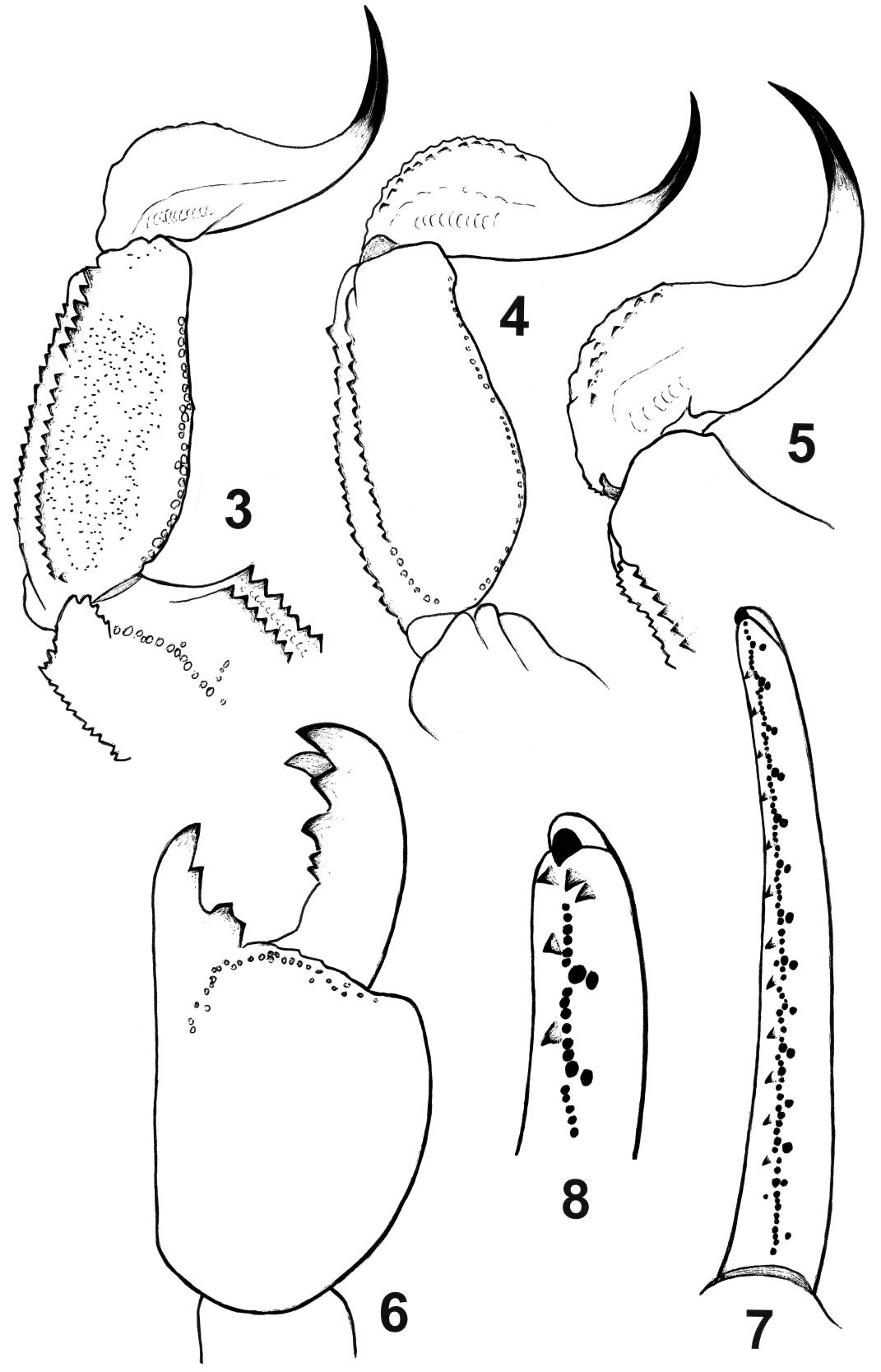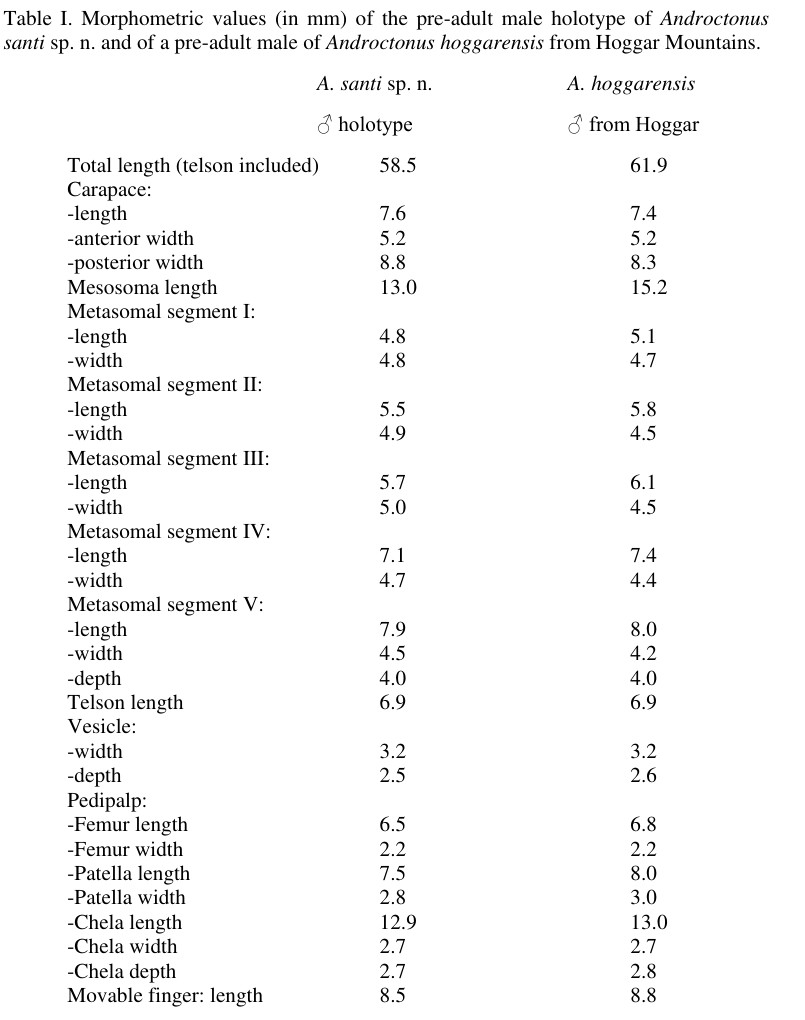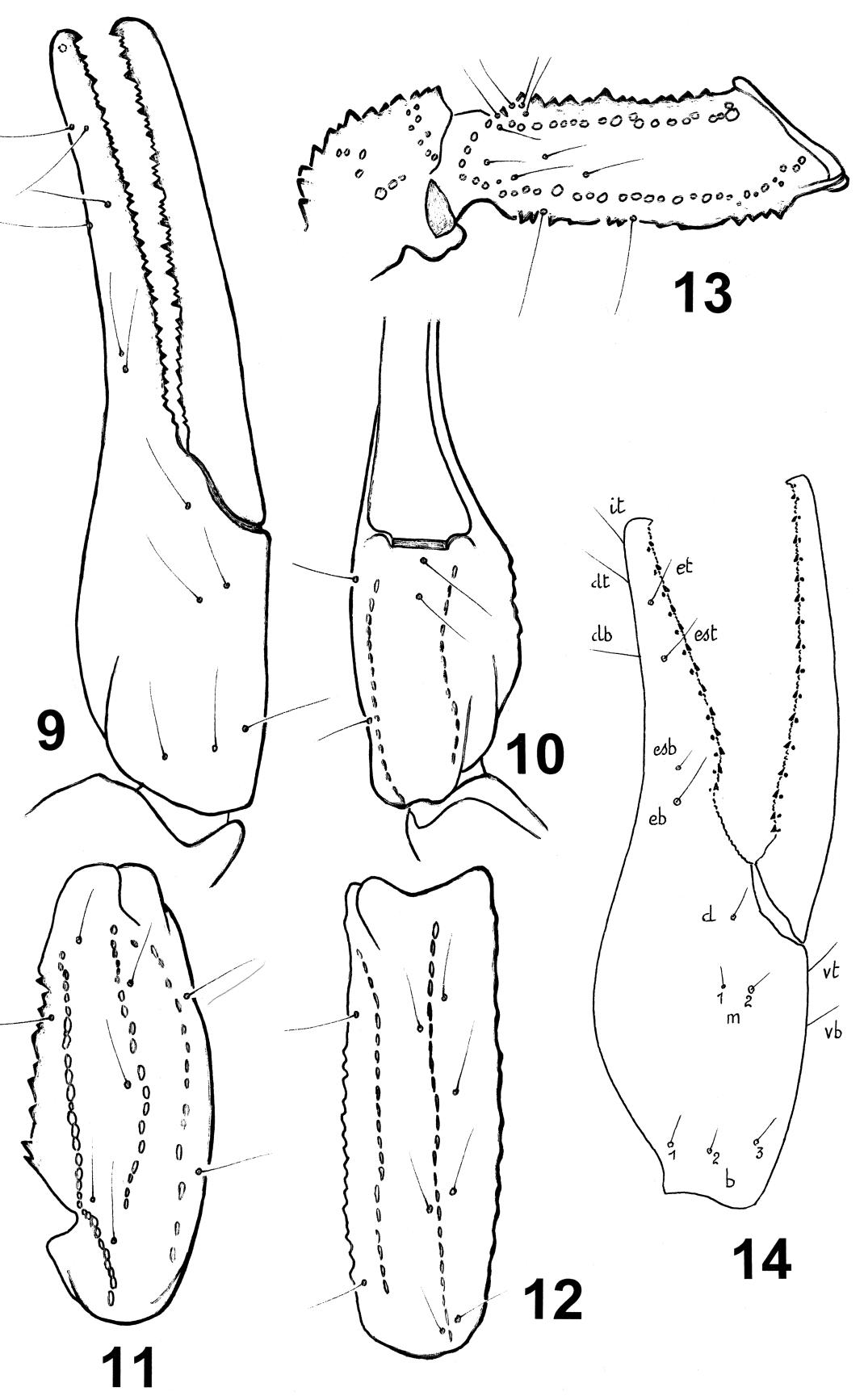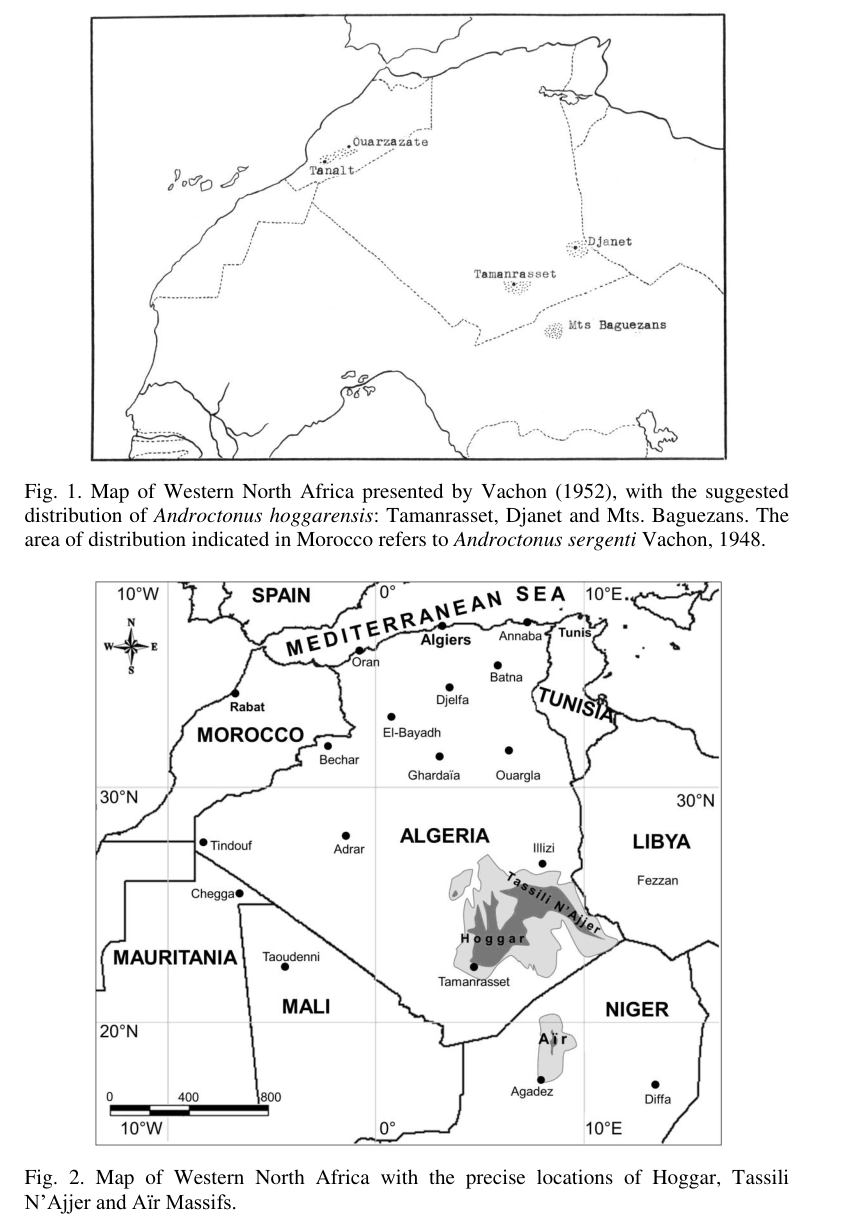Androctonus santi (Lourenço, 2015)
Androctonus santi (Lourenço, 2015) - Niger
Etymology: The specific name honours Mr. Sébastian Sant, Nice, France, who
collected the specimen here described
Diagnosis
A scorpion of medium size, with pre-adult male reaching a total length of 58.5
mm (full adults should reach 65 to 70 mm in total length). General colouration dark
brown to blackish; legs dark brown; metasomal carinae almost blackish. Carinae and
granulations on carapace and tergites moderately developed. Metasomal segments I to V
only moderately enlarged distally; dorsal depression on segments I to IV moderately to
strongly marked. Anal arc with four moderately marked rounded lobes. Pedipalps with an
inconspicuous setation on femur and patella; fixed and movable fingers with 12-12 rows
of granules. Pectines with 32-32 teeth in the male holotype.
Relationships
Androctonus santi sp. n., can be distinguished from the other species of
Androctonus, and in particular from Androctonus hoggarensis (Pallary, 1929), by a
number of characters: (i) colouration of legs dark brown; not yellow, (ii) a smaller overall
size, (iii) metasomal segment V intensely granulated and with better marked anal lobes,
(iv) chela fingers with 12-12 rows of granules, vs. 13-14 in A. hoggarensis, (v) scalloping
of the proximal dentate margin of the fixed finger better marked on the new species, as
suggested on the drawings presented by Vachon (1952).
Description based on male holotype. [Measurements in Table (I).]
Colouration. Mainly dark-brown to blackish. Prosoma: carapace dark brown with
an inverted blackish triangle extending from the lateral eyes to the median eyes; carinae
and eyes marked by dark pigment. Mesosoma: dark brown. Metasoma: segments I to V
dark brown to blackish; carinae blackish; vesicle dark brown; aculeus reddish at its base
and blackish at its extremity. Venter yellow to brown-yellow; pectines and genital
operculum pale yellow; sternites III to VI, in male, with large white spots. Chelicerae
brownish-yellow with intense dark variegated spots; fingers brownish with dark teeth.
Pedipalps dark brown to blackish with very dark carinae; fingers brownish-yellow with
the oblique rows of granules dark red. Legs dark brown.
Morphology. Carapace moderately granular; anterior margin without any median
concavity, straight. Carinae moderately marked; anterior median, central median and
posterior median carinae moderately granular. All furrows moderate to weak. Median
ocular tubercle slightly anterior to the centre of carapace. Eyes separated by more than
two ocular diameters. Three pairs of lateral eyes. Sternum triangular and narrow; slightly
longer than wide. Mesosoma: tergites moderately to strongly granular. Three longitudinal
carinae moderately to strongly crenulate in all tergites; lateral carinae reduced in tergites I
and II. Tergite VII pentacarinate. Venter: genital operculum divided longitudinally,
forming two semi-oval plates. Pectines: pectinal tooth count 32-32 in male holotype;
middle basal lamella of the pectines not dilated. Sternites without granules, smooth with
elongated spiracles; four moderately to strongly marked carinae on sternite VII; other
sternites acarinate and with two vestigial furrows. Metasoma: segments I with 10 carinae,
strongly crenulated; ventral strongly marked; segments II to IV with 8 carinae,
crenulated; the first four segments with a smooth and moderately to strongly marked
dorsal depression; segment V with five carinae; the latero-ventral carinae crenulate with
several lobate denticles; ventral median carina not divided posteriorly; anal arc composed
of 17-18 inconspicuous ventral teeth, and four moderately marked rounded lateral lobes.
Reference:
Lourenco WR. A new species of Androctonus Ehrenberg, 1828 from the Aïr Massif in Niger (Scorpiones: Buthidae). Serket. 2015;14(4):167-75. [Open Access]

 Figs. 3-8. Androctonus santi sp. n. (3, 6-8) and Androctonus hoggarensis (4-5). 3-5,
Figs. 3-8. Androctonus santi sp. n. (3, 6-8) and Androctonus hoggarensis (4-5). 3-5,
 Figs. 9-13. Androctonus santi sp. n. Male holotype. Trichobothrial pattern. 9-10. Chela
Figs. 9-13. Androctonus santi sp. n. Male holotype. Trichobothrial pattern. 9-10. Chela